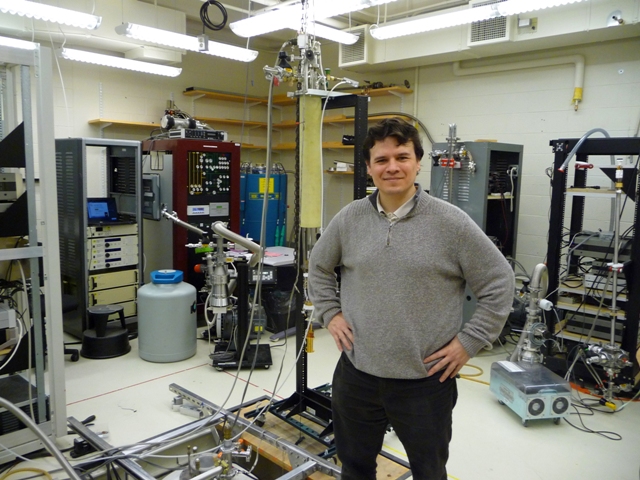Valencian physicist Pablo Jarillo-Herrero has been awarded the Wolf Prize by the Israeli government. He previously received the The Oliver E. Buckley Condensed Matter Prize from the American Physical Society “for the discovery of superconductivity in twisted bilayer graphene.”
Pablo is best known for his work on “magic angles” in graphene and other thin materials like chromium trichloride, turning them from insulators to superconductors, which may hold the secret to room-temperature superconductivity.
The prize, named in honour of a former president of Bell Labs, is given annually by the American Physical Society to a researcher whose work has significantly impacted the field of condensed matter physics, and is accompanied by a cash prize of $20,000.
Valencian physicist Pablo Jarillo Herrero was one of 96 scientific researchers to receive the prestigious PECASE award in 2012, and the only Spaniard on the list. He is also the first Spaniard to win the Buckley prize.
Pablo, who currently undertakes his research at MIT, received his award because of his advances in the study of the potential uses of Graphene, an allotrope of carbon, discovered in 2005.
The award was presented in Washington’s Museum of Natural History and represents a recognition of the cutting edge research by the 34 year old physicist, who has published in journals such as Nature and Physics Review.
Prestige is not the only reward, Pablo could count on a million dollars over the following 5 years to continue his investigations, as well as a visit to the West Wing of the White House (the real one not the TV set) to meet President Obama personally.
Graphene is important for its capacity as a semi-conductor and may well result in the production of micro-chips thousands of times faster than the ones currently being used in computers a hundred times faster.
 Jarillo-Herrero joined MIT as an assistant professor of physics in January 2008. He received his M.Sc. in physics from the University of Valencia, Spain, in 1999. Then he spent two years at the University of California in San Diego, where he received a second M.Sc. degree before going to the Delft University of Technology in The Netherlands, where he earned his Ph.D. in 2005. After a one-year postdoc in Delft, he moved to Columbia University, where he worked as a NanoResearch Initiative Fellow. His awards include the Spanish Royal Society Young Investigator Award (2007), an NSF Career Award (2008), an Alfred P. Sloan Fellowship (2009), a David and Lucile Packard Fellowship (2009), the IUPAP Young Scientist Prize in Semiconductor Physics (2010), and a DOE Early Career Award (2011).
Jarillo-Herrero joined MIT as an assistant professor of physics in January 2008. He received his M.Sc. in physics from the University of Valencia, Spain, in 1999. Then he spent two years at the University of California in San Diego, where he received a second M.Sc. degree before going to the Delft University of Technology in The Netherlands, where he earned his Ph.D. in 2005. After a one-year postdoc in Delft, he moved to Columbia University, where he worked as a NanoResearch Initiative Fellow. His awards include the Spanish Royal Society Young Investigator Award (2007), an NSF Career Award (2008), an Alfred P. Sloan Fellowship (2009), a David and Lucile Packard Fellowship (2009), the IUPAP Young Scientist Prize in Semiconductor Physics (2010), and a DOE Early Career Award (2011).

